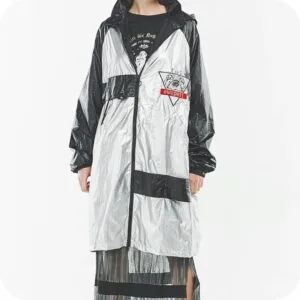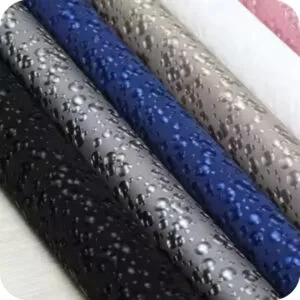
Release paper fabric is an essential material in various industries, widely used for its non-stick, easy-to-remove properties. This versatile material plays a crucial role in the production of composite materials, packaging, and even certain textile applications. It is commonly used in situations where an adhesive is involved, acting as a protective surface that can be easily peeled away without leaving residue.
In this article, we will explore what release paper fabric is, the different techniques used to produce it, its benefits, and its wide range of applications in diverse industries. Throughout, we will highlight some key sources and manufacturers of high-quality #releasepaperfabric like #fabrics-fty.com and #textile-fty.com, where you can learn more and acquire premium materials for your business or project.
Release paper fabric is a type of paper-based material that has been coated with a non-stick agent, making it easy to release or peel off from adhesives or other materials without damaging the surface. These papers are typically used in processes involving adhesives, silicone coatings, or laminating operations, where it is crucial to ensure that materials can be easily separated without causing any disturbance to the product.
Release paper fabric is often made from #kraftpaper, #cellulose, or #polyester, which are coated with a silicone layer or other non-stick agents. The combination of these materials creates a surface that resists adhesion, providing a protective layer between the adhesive-coated product and the external environment.
Techniques Used in the Production of Release Paper Fabric
The production of release paper fabric involves several techniques, depending on the desired characteristics and the type of application for which the paper is intended. The most common methods include:
1. Silicone Coating
The most common method of creating release paper fabric is by applying a silicone coating to the surface of the paper. The silicone acts as a non-stick agent, which enables the paper to release cleanly from adhesive products. Silicone-coated release papers are widely used in industries where products need to be protected from sticking, such as in the production of tapes, labels, and medical dressings.
The silicone coating can be applied in different ways, including the use of #curingovens or #heatrollers, which allow for a smooth, uniform application across the entire surface of the paper. The silicone is generally cured at a specific temperature to ensure that it adheres properly to the paper, creating a durable, long-lasting non-stick surface.
2. Fluoropolymer Coating
In some cases, release papers are coated with fluoropolymer materials, which offer a higher degree of non-stick properties than traditional silicone coatings. Fluoropolymer-coated release paper fabric is used in applications that require even more robust anti-stick properties. This method is often seen in industrial applications such as composite manufacturing, where materials like #fiberglass or #carbonfiber are used.
3. Polymer Coating
Another method for creating release paper fabric involves applying a polymer coating to the surface of the paper. This polymer layer serves as a protective barrier, preventing adhesives and coatings from sticking. Polymer-coated release papers are commonly used in the packaging industry and in the manufacture of self-adhesive products such as labels, decals, and stamps.
The polymer coatings used are typically #polyethylene, #polypropylene, or other specialized formulations designed to withstand certain environmental conditions such as moisture, heat, and chemicals.
4. Calendering and Heat Pressing
Some release paper fabrics are made using calendering, which involves pressing the paper through heated rollers to create a smooth, thin, and non-porous surface. This method is often combined with other coating techniques to achieve the desired release properties.
Calendering is a precise process that requires careful control of heat and pressure to ensure that the paper remains intact while the coating bonds well. After calendering, the paper may be further processed by heat pressing or laminating with other materials to enhance its strength and durability.
Benefits of Release Paper Fabric
Release paper fabric offers several key benefits that make it invaluable in many industrial and commercial applications. Below are some of the advantages of using release paper fabric:
1. Easy to Remove
The primary benefit of release paper fabric is its ability to peel away easily from a substrate without leaving any residue behind. This non-stick property makes it ideal for use with adhesives, as it prevents the adhesive from bonding with the paper. The ease of removal ensures that products can be produced quickly and efficiently without delays or complications.
2. Protective Barrier
Release paper fabric provides a protective layer that shields sensitive materials from dirt, dust, and other contaminants. This makes it an essential part of the production process in industries that require sterile environments, such as in the manufacture of medical devices, food packaging, and pharmaceuticals.
Additionally, release paper fabric can help to prevent damage to delicate materials, such as during the curing or drying process. By serving as a protective barrier, it helps to maintain the quality of the product.
3. Durable and Versatile
Release paper fabrics are designed to withstand various environmental conditions, including heat, humidity, and chemicals. As a result, they can be used in a wide range of applications, from the automotive industry to the medical sector. The durability of these papers ensures that they perform well under pressure, making them a reliable choice for businesses requiring consistent, high-quality products.
Furthermore, the versatility of release paper fabric means it can be customized for different applications. By adjusting the type of coating or treatment applied, manufacturers can create release papers that meet the specific requirements of their clients, whether for food-grade packaging, industrial use, or high-end fashion applications.
4. Cost-Effective Solution
Release paper fabric offers a cost-effective solution for businesses that need a reliable and durable method of protecting and separating materials during manufacturing processes. By reducing the amount of wasted product and improving the efficiency of production lines, release paper fabric helps companies lower their overall production costs.
5. Increased Efficiency in Manufacturing
Using release paper fabric can improve the overall efficiency of manufacturing operations. By preventing adhesives from sticking to surfaces, manufacturers can streamline the production process and avoid costly delays caused by the need to remove excess adhesive or make repairs. Additionally, the ability to customize release paper for specific applications ensures that manufacturers can reduce waste and optimize their resources.
Applications of Release Paper Fabric
Release paper fabric is used in a variety of industries for numerous applications. Some of the most common uses include:
1. Packaging and Labeling
Release paper fabric is widely used in the packaging industry, especially in the production of self-adhesive labels, stickers, and tags. In these applications, the release paper serves as a backing material that protects the adhesive surface until the product is ready to be applied. Once the label is removed from the release paper, it can be easily affixed to a product.
Additionally, release paper fabric is used in the food packaging industry to prevent adhesives from sticking to packaged items, ensuring that the products remain intact and contamination-free.
2. Medical Industry
In the medical industry, release paper fabric is used for a variety of purposes, including in wound care products, bandages, and medical tapes. The non-stick properties ensure that the products do not adhere to the skin or other surfaces, making them easier to apply and remove. Release papers are also used in the production of medical devices, ensuring that sensitive components are protected during handling and storage.
3. Composite Materials and Laminates
Release paper fabric is essential in the production of composite materials, such as fiberglass, carbon fiber, and other laminates. In these applications, the release paper serves as a barrier between the composite material and the mold or tooling surface. This prevents the composite material from sticking to the mold, allowing for easy separation once the material has cured.
4. Automotive Industry
Release paper fabric is used in the automotive industry during the production of components such as gaskets, seals, and adhesives. The paper helps to prevent adhesive materials from sticking to unwanted surfaces during the manufacturing process, ensuring that parts can be assembled efficiently without damage.
5. Textile Manufacturing
In textile manufacturing, release paper is often used in the production of self-adhesive fabrics or heat transfer products. The paper helps to protect the adhesive or coating until it is ready to be applied to the fabric. This is commonly used in the production of custom designs for clothing, home textiles, and promotional products.
6. Electronics Industry
Release paper fabric also plays an important role in the electronics industry, where it is used in the production of adhesive-backed components for electronics assemblies. These materials help ensure that adhesive does not interfere with the delicate components of electronic devices, such as circuit boards, displays, and sensors.
Release paper fabric is a versatile and indispensable material in various industries, offering non-stick properties that make it invaluable for manufacturing processes involving adhesives, coatings, and laminates. Its applications span a broad range of sectors, from packaging and medical products to automotive and textile manufacturing.
Whether you’re involved in large-scale manufacturing or small-scale custom projects, #fabrics-fty.com and #textile-fty.com provide high-quality release paper fabric that can meet your needs. These suppliers offer a range of products tailored to different applications, ensuring that businesses can find the perfect solution to enhance their production efficiency, reduce costs, and maintain product quality
#FreeWaterproofFabric #PUCoatingFabric #JacquardFashionFabric #MilkyPUCoating



